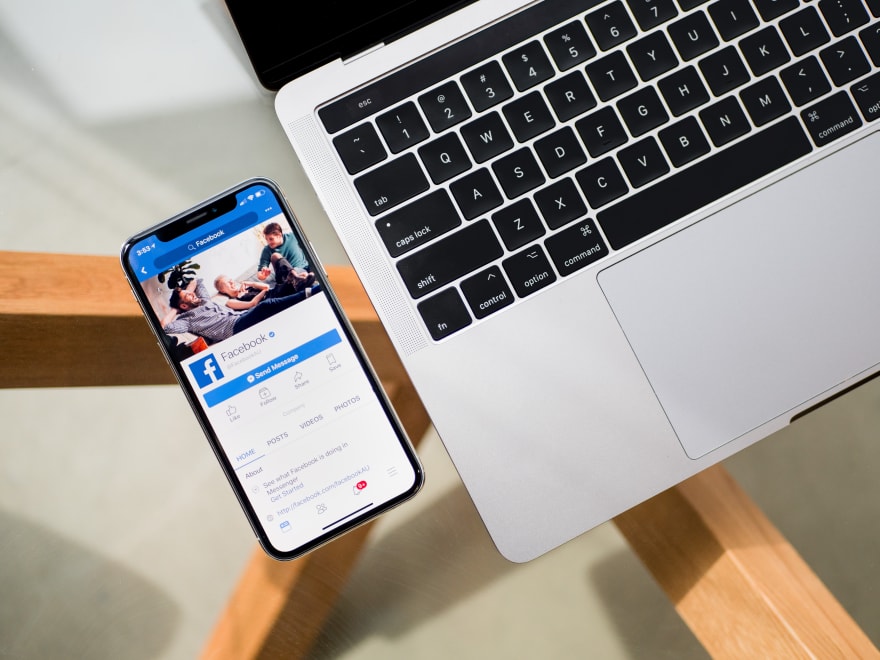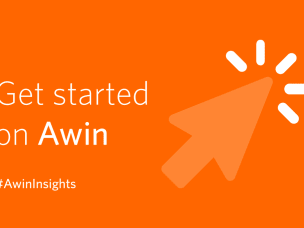The ultimate guide to running a successful Facebook Advertising Campaign
Written by Samantha Sherer on 16 minute read
In 2019 there were 4.4 billion people using the internet.

Of those people, over half use Facebook. With a massive 2.4 billion users, Facebook is on the screens and in the pockets of over one third of the world’s population and so, your business should be too.
Why should you consider a Facebook Advertising Campaign?
Given the number of users on the platform, Facebook advertising is one of the most accessible forms of advertising in the modern world. One of its greatest advantages is that it works perfectly on mobile. We now know that mobile internet usage is bigger than desktop, and as such, all your digital advertising should be built with mobile in mind.
The potential return on investment on Facebook Ads is huge if you work out how to engage with your audience correctly. Facebook Ads make it easier than ever to be incredibly specific about who you choose to target with your advertising.
Knowing who your audience is is an excellent advantage in this case, but not necessarily essential as Facebook Ads Manager will give you the tools to be able to learn, grow and optimize your advertising to find and ultimately fit your audience.
Having said this, you must be aware that it’s also quite easy to waste your money on social advertising if you aren’t willing to monitor and tweak your progress.
If this is all sounding a bit confusing, don’t panic. We’ll explain everything you need to know in our ultimate guide.
What is the difference between a Facebook Ad and a Facebook Ad Campaign?
You’ve heard of the two but what’s the difference?
A Facebook Ad Campaign is the overarching umbrella of your Facebook advertising. Everything within a Facebook Ad Campaign has the same objectives or goals.
The next tier down within a campaign is Ad Sets. These can have differing target audiences, run times or budgets.
Facebook Ads are the final tier, where each ad within an ad set has the same goal, audience, budget, and schedule, but each could have different imagery or text.
To create an overall successful Facebook Ad Campaign it’s important to understand each tier and break your campaign up appropriately.
How to create a successful Facebook Ad Campaign
First things first, to start creating ads on Facebook your brand or business will need a Facebook Page and you’ll have to create and manage your ads through Facebook Ads Manager.
What is Facebook Ads Manager?
This is where your Facebook Ad Campaigns, Ad Sets, and Ads are created. Using this management platform ensures you can keep your personal profile separate from your business page. It also allows others, like employees or agencies, to use the same ad account for a business or brand without having to connect personal profiles to each other.
Know your audience
Knowing your audience or ideal customer is essential to the success of any marketing campaign. Though you may think everyone in the world is a potential customer, chances are you can define this a little better. We assure you that casting a wide net to try and hit everyone and everything in sight is a mistake.
You won’t be able to please everyone with this method and it’s likely you’ll see little return on investment. If your target is indeed vast, there are still ways to segment your audience or customers to best optimize your advertising spend.
The best way to decide how to target your audience is to think of your ideal customer. This could be an actual person or business you have worked with before or an imaginary person you would love to be your dream customer.
In the world of marketing, this is often called creating a marketing persona or profile. When you think about this customer, who are they? What sorts of things do they like? Where do they live? What do they do on weekends? What are their frustrations? Are they married, single, dating? Think about their age and background.
Consider any details that you think could make up a dream character that you would love to sell to or work with. You can even give them a name; we find this often helps.
Due to Facebook Ads Manager’s incredible targeting abilities, you can now start targeting exactly this type of person. When creating an Ad Set, these characteristics will play a great part in niching down who your ad is displayed to.
This is the part where lots of first time ad creators begin to panic, as the more parameters they place around their ad, the lower the estimated potential reach Facebook will show you. But that’s ok, your goal should never be to speak to everyone but to speak to the specific group that will want what you have to offer.
As previously mentioned, if you aren’t sure exactly who this is you have the ability to try out your first few ideas on a low budget and examine the results. From here you can slowly and gradually tweak your targeting parameters and watch how your results change.
Alternatively, if you do know your audience and you know them well, you can choose to use Facebook’s ‘lookalike audience’ feature. This allows you to input data you have gathered from previous clients and Facebook will find new customers and audiences that display similar behaviors online, and could be interested in your brand, service or products.
Know your goal
We know that your main goal, just like everyone else, is to get a great ROI and make a profit for your business. But knowing your goals and objectives for running a Facebook Ad Campaign goes deeper than this. You should consider, in depth, what you hope to achieve from your advertising and how you’ll measure your success.
Perhaps you provide a service that people need in an emergency. In this instance, your goal might be to make people more aware of your business and services, so that when an emergency occurs your name comes to mind.
If you’re an e-commerce store your goal may be to convert direct sales from Facebook, so you want them to click straight from your ad to purchasing your product. Your goal could also be to get more subscribers to a mailing list, to attend an event, or to engage with your business more actively on social media.
Whatever it is, your main goal can’t encompass everything. Instead, what you can do is run several campaigns with different goals to try to achieve everything you’re hoping for.
Campaign types
As you may have guessed, there are several different campaign types depending on your goals. Within Facebook Ads Manager these are known as Objectives - essentially this is what your ad does.
There are three different categories of Objectives: Awareness, Consideration, and Conversion.
Awareness
- Brand Awareness - Show your ad to people more likely to pay attention and remember your ad after the campaign is over. It could be shown to the same person several times
- Reach - Show your ad to the maximum number of people possible, usually meaning each individual consumer will see the ad less frequently, but casting a wide net
Consideration
- Traffic - Direct traffic to a destination on or off Facebook like a website, app or Messenger conversation
- Engagement - Get more people to see and engage with your post or Page. Engagement can include comments, shares, likes, event responses and offer claims
- App Installs - Direct traffic to the app store to download your app
- Video views - Promote videos that show behind-the-scenes footage, product launches or customer stories to raise awareness about your brand
- Lead generation - Collect lead information from individuals interested in your business
- Messages - Engage in more conversations about your business with potential and current consumers in Messenger to complete purchases, answer questions or offer support
Conversion
- Conversions - Gain participation in a valuable actions on your website, app or in Messenger, such as adding payment info or making a purchase. Use the Facebook pixel or app events to track and measure conversions
- Catalog Sales - Create ads that automatically show items from your catalog based on your target audience
- Store Traffic - If you have multiple stores, restaurants or other physical business locations, encourage visits and sales by showing ads to people who are nearby
Campaign structure
Once you have decided on your Campaign Objectives, you’ll need to pop in all of those characteristics you decided your ideal customer has in your Ad Set under the Audience section. You can save the audience parameters too if you’d like, so you can use them for future campaigns.
Here you’ll also choose your budget and how long you’d like the ad to run for. There are advanced options for when you’d like to be charged (for example - per impression) and specifically when or how many times you’d like your ad to display in a day.
Then you’ll move on to your ad creative. More about how to do this optimally under ‘Tips for creating the perfect Facebook Ad.’
How many ads can you have in a Facebook Ad Campaign?
You can have an extreme amount of ads within a Facebook Ad Campaign.
A standard account can have up to a whopping 5,000 Ad Campaigns. Within those campaigns, you can have 5,000 active Ad Sets. And within each Ad Set, a standard account can have up to 50 Facebook Ads.
So technically one standard account can have up to 125 billion ads running. Though we’d suggest that might be a few too many to keep your eye on.
Facebook Ads explained
Do they work?
In short… definitely. However, this is all dependent on how much work you’re willing to put into the process. The return on investment with Facebook Aads can be exponential but, as mentioned, knowing your specific goals and objectives, knowing your desired audience and customers and monitoring, tweaking and refining are vital elements to having success with Facebook Ads.
Different ad types
Your earlier assessment of your audience personas should help you to decide what style of ad to choose within Ads Manager. Unlike Objectives (what your ad does) the ad type is how your ad looks.
If your audience persona is a mom in need of baby products quickly and fuss-free, perhaps an in-hahfeed collection ad with the top-selling products from your website is the best option. Here she can immediately click through and make a purchase without having to leave Facebook.
If your service is something clients find a little complicated for example, finance or legal services, try using a short explainer video to help them feel more at ease and trusting of your business’s knowledge.
It’s important to remember that studies have shown 69% of videos on social media are watched without sound, so it’s better for engagement if you annotate any video that has a voiceover.
Maybe you run a food business and don’t have any video footage available; a slideshow ad featuring several of your images is another good option. It’s a great way to catch your audience’s eye, plus this can all be done within the Ads Manager tool and requires no tricky video editing knowledge.
The options are almost endless, and if you aren’t sure which to choose the best way forward is to try a few out. Facebook offers A/B split testing, in which you can either try different ad content to the same audience or the same ad content to different audiences depending on which bit has you stumped.
Once you have run your split test for a short while, you’ll be more aware of what works well for you and your business. From here you can continue to monitor, test and refine.
Your full range of options for Facebook Ads, according to Facebook itself, are:
- Photo ads - Photo ads offer a clean, simple format to feature engaging imagery and copy. Convey who you are and what you do through high-quality images or illustrations
- Video ads - Tell your story with sight, sound and motion. Video ads come in a range of lengths and styles, from short, feed-based ads that you watch on the go, to longer videos that you watch on the sofa
- Stories ads - Stories are a customizable, edge-to-edge experience that lets you immerse individuals in your content. Tap into their passions and inspire them to take action on mobile
- Messenger ads - Messenger ads help people start conversations with your business. Get personal with current or potential customers and add interactive or automated features
- Carousel ads - Carousel ads let you showcase up to 10 images or videos in a single ad, each with its own link. Highlight different products or tell a brand story that develops across each card
- Slideshow ads - Slideshow ads are video-like ads made of motion, sound, and text. These lightweight clips help you tell your story beautifully across devices and connection speeds
- Collection ads - Collection ads let people discover, browse and buy what you offer. Consumers can tap an ad to learn more about a specific product, all within a fast-loading experience
- Playable ads - Playable ads offer an interactive preview before they download an app. Find higher-intent users for your app with this try-before-you-buy experience
- Instant Experience ads (formerly Canvas ads) - Instant Experiences allow you to create a full-screen, fast-loading destination designed for mobile, and add them to almost any ad format
It’s important to know that not every ad style is available for every Campaign Objective, so it’s best to explore your options before you begin creating specifically for an ad type.
Tips for creating the perfect Facebook Ad
It’s time to be creative. Try to use clear, eye-catching imagery or videos to grab your audience’s attention. When you combine this with well thought out wording, people are far more likely to engage with your content, stop scrolling and click on your ad.
Remember that Facebook prefers your imagery to have very minimal text overlay within the image itself. They even provide an image tester tool that allows you to upload your image before utilizing it in your ads, to know whether the reach of your ad could be penalized for having too much text.
More often than not, images that are yours will work best. No one truly likes to feel like they’re being sold to. People are looking for genuine experiences, even within their advs online. This means you should try to shy away from stock images.
Though sometimes they may appear more visually appealing to you, often a potential customer can tell when a stock image has been used and it can create a disingenuous feeling.
When it comes to text, it pays to be original here too. Copying wording you’ve seen before that you’ve found entertaining might make you laugh, but chances are someone within your audience will have seen it before too. Be yourself.
Be consistent in your brand persona. If, in your organic posting, your brand is typically quite cheesy, continue this through to your ads too. If your brand is usually very serious, straying too far from this can confuse your audience. A confused audience is unlikely to trust you and people don’t spend money with brands they don’t trust.
Typically, being brief in your written content while still ensuring your audience can understand what your ad is about is advantageous. Approaching your ad content with an entirely different voice or look and feel only seems to work if you are completely rebranding or trying to reach an entirely new audience sector.
Installing the Facebook Pixel on your website is one of the best ways to optimize your ads and have a very accurate picture of how your ads are performing. The small piece of code is placed into the back end of your website and allows you to gain further analytics about your audience’s behavior. It also allows you to retarget (send new or the same ads again to) people who have already visited your website. This is an essential way to avoid missing potential sales and leads.
You can create and install a Facebook Pixel on your website yourself, providing you have access to the back end of your website. Otherwise, speak to your web developer about having this installed.
Facebook Ads costs
Wordstream claims that $1.72 is the average cost per click (CPC) for Facebook Ads across all industries worldwide. However, this is an extremely varied metric. Your specific audience and ad choices could mean your ads could cost a few cents per click or up to $10 per click. CPC may also not be the metric you choose to mark your ads’ success against.
There are a variety of metrics you can use to judge how much your Facebook Ad Campaign has cost you. Including CPC, CPI (cost per impression) CPM (cost per thousand impressions) and many more.
One of the best things about Facebook advertising is that the cost is completely up to you. No budget is too big or small to begin. You can choose to set your budget to a daily amount, or an amount for the whole campaign.
Facebook bidding strategies
This is where things get a little complex. Facebook’s ad system runs on an auction. All ads run against each other and the system determines which will be displayed “based on the ads' maximum bids and ad performance.”A bid in the auction is what you’re willing to spend to have your ad shown to the desired person.
When you are presented with your choice of ad spend you have two options: cost or control. If you do not choose to cap the cost of your spending Facebook claims it will get you the best result for your spending.
Otherwise, you can choose what you’d like to have as an overall spend, what is the maximum bid you’d be willing to spend, or a target cost which will spend as close as possible to the cost you set per bid. Facebook provides a simplified table on choosing the right bid strategy including ad types, when to use, benefits and considerations.
Overall…
Facebook Advertising is an excellent tool for business owners and brands as part of a comprehensive digital marketing strategy.
Never before has a marketing tool been so widely available to business owners who didn’t want to engage an agency or put in a lot of groundwork themselves. Nor has a marketing strategy been able to target people so specifically, even finding potential customers that may be similar to a business’s already established customer base.
Provided you have a plan in place, everyone has the ability to gain more traction for their business or brand by developing a Facebook Advertising Campaign.



